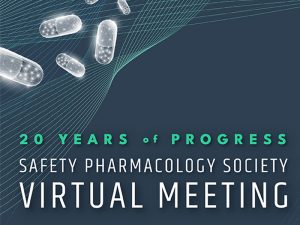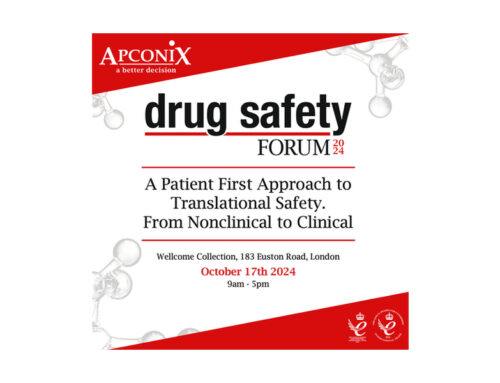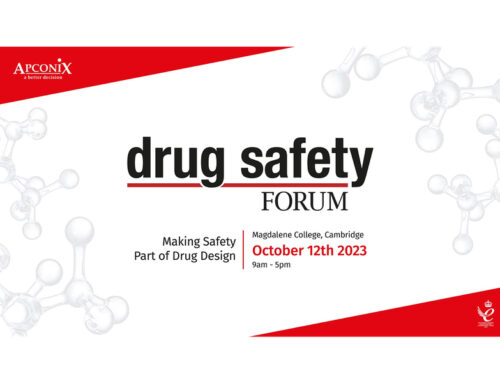Dr Michael Morton is Attending Safety Pharmacology Society

Dr Michael Morton will be attending the annual Safety Pharmacology Society Meeting being held virtually this year between 14th and 17th of September.
Mike will be presenting Poster 030:
Electrophysiological analysis of Seroquel’s activity in sodium ion channels, CiPA ion channels and hiPSC-neuronal cells
K L Rockley1; K Jones1; R A Roberts1; M J Morton1
1 ApconiX Ltd, UK
The antipsychotic Seroquel (quetiapine) is used for treatment of schizophrenia, bipolar disorder and depression. Seroquel works by antagonizing dopamine D1 and D2 receptors, serotonin 5HT1A and 5HT2A receptors, adrenergic A1 and A2 receptors, the H1 histamine receptor and its metabolite norquetiapine blocks the M1 muscarinic receptor. Whilst generally well tolerated, overdose is associated with anticholinergic syndrome (confusion, restlessness), sedation/coma, seizures, tachycardia, hypotension and prolongation of the QRS and QTc intervals. Seroquel’s MOA explains many of these toxicities, however except for inhibition of the hERG potassium channel (responsible for prolongation of the QTc interval), Seroquel’s activity against ion channels which may contribute to toxicity has been largely unreported. In addition, Seroquel-induced hERG block does not translate to Torsdaes de Pointes, suggesting counteracting effects in other ion channels. The aim of this work was to characterize activity of Seroquel (0.1 – 300μM) in human sodium ion channel subtypes (NaV1.1, 1.2, 1.4, 1.5, 1.6 and 1.7) and in the CiPA ion channels using recombinant cell lines and automated patch clamp. IC50 values were estimated from 8-point concentration-response curves and resting and use-dependent block were recorded at room temperature. Seroquel showed similar potency and use dependence in NaV1.1, 1.2, 1.4, 1.5 and 1.7 (P1 and P20 IC50 values ranging from 58 – 115μM and 9.1 – 35.27μM respectively) and showed no activity in NaV1.6 at the concentrations tested. Seroquel demonstrated a range of potencies at all CiPA ion channels. It was most potent at hERG (IC50 <10mM). NaV1.5 is found in the heart, therefore its inhibition may be linked with QRS interval prolongation. NaV1.1/1.2 are primarily found in the brain and linked to epilepsy, therefore inhibition may correspond to seizure risk. Given the submicromolar free Cmax of Seroquel, it would be classified as low proarrhythmic risk. Using microelectrode array analysis Seroquel (100μM) reduced electrical activity of hiPSC-neuronal cells (measured by number of active electrodes, spikes and networks bursts). This may reflect antagonism of Seroquel’s receptor targets and relate to the drugs antipsychotic effects. These results provide additional insight into the activity of Seroquel in ion channels and suggest that hiPSC-neuronal cells are a suitable model for further investigation into the drug’s neuronal effects.
We’ll add the final poster at a later date.





